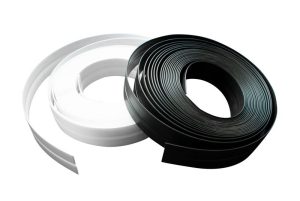
Hinges are used to create a limited angle of rotation between two objects. When attached to a door and frame, for instance, a hinge will allow the door to pull open. While most hinges consist of several parts — two leafs, a knuckle and a pin — some of them are made of a single piece of material.
Continuous hinges are solid. Also known as living hinges, they don’t feature the same parts as traditional hinges. Rather, continuous hinges are comprised entirely of a single and solid piece of material. There are several things you should look for when choosing a continuous hinge.
Flexible Material
Continuous hinges must be made of a flexible material. When made of a rigid material, they won’t be able to bend, nor will they create a limited angle of rotation between the objects to which they are connected. Fortunately, there are flexible materials used to make continuous hinges, such as alloyed plastic polymers.
Consider the Color
You should consider the color when choosing a continuous hinge. While traditional hinges are often limited to a single color, such as bronze, continuous hinges are often available in multiple colors. They are made of a nonmetal elastic material, which can typically be dyed. Some continuous hinges are dyed white, whereas others are dyed black. If you’re going to buy a continuous hinge, you should consider the color.
Length
How long do you need the continuous hinge? Continuous hinges are usually longer than traditional hinges. They are sold in rolls. After buying a continuous hinge, you can measure and cut the rolled material to meet the needs of your hinge application. Nonetheless, roll sizes may vary. Some rolls measure 50 feet long, whereas others measure 100 feet long.
Open Depth
In addition to length, you should consider the open depth when choosing a continuous hinge. Open dept is exactly what it sounds like: It’s the depth at which a continuous hinge is able to open. Typical open depths range from 1 to 4 inches. The higher the open depth, the deeper the continuous hinge is able to open.
Load Rating
Don’t forget to check the load rating when choosing a continuous hinge. Like all hinges, continuous hinges must be able to support the object with which they are used. Hinges are used to allow one object to rotate away from another object. Therefore, hinges must be able to accommodate the load of the rotating object.
